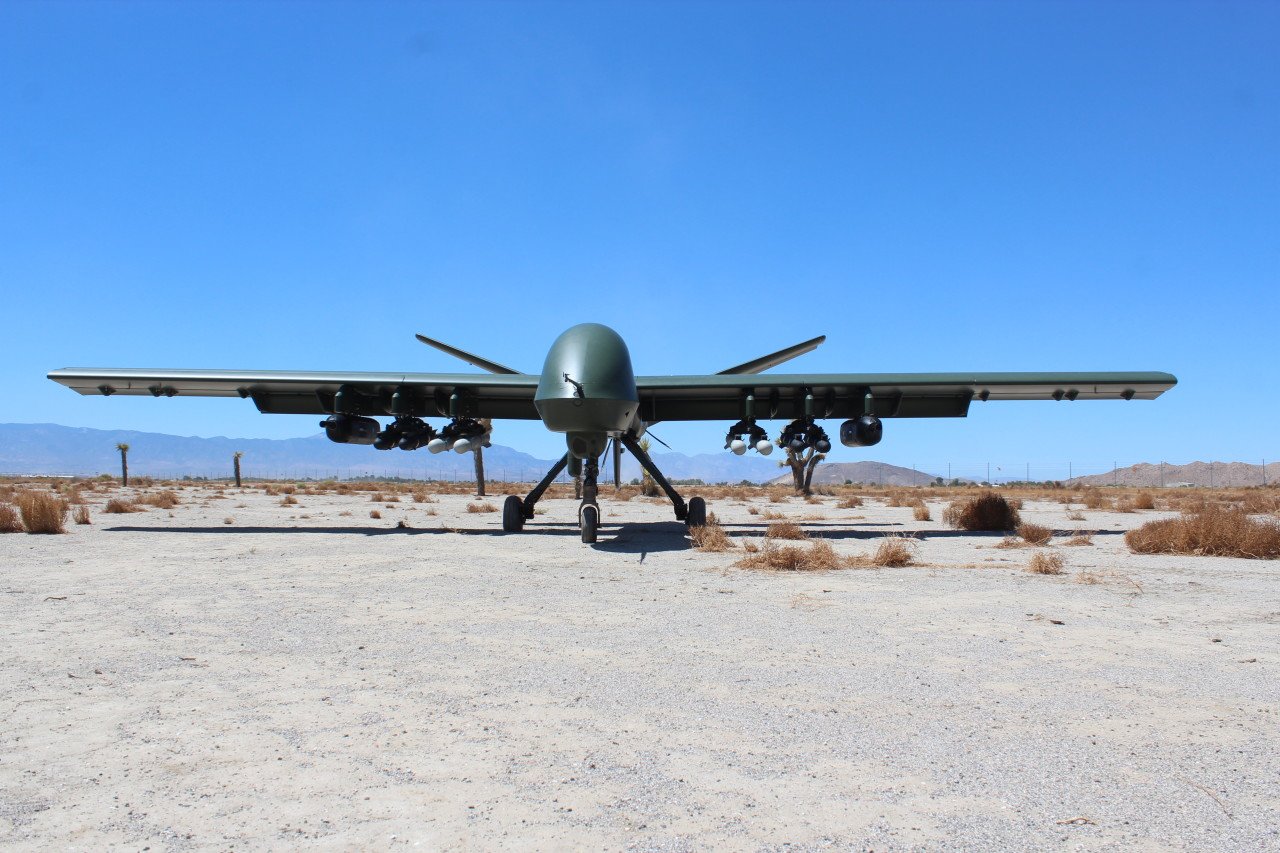
General Atomics first revealed photos of the Mojave drone outfitted with M134 miniguns in January 2022. (GA-ASI)
WASHINGTON — General Atomics is positioning a future version of its MQ-1C Gray Eagle combat drone as a potential alternative to the Army’s now-canceled Future Attack Reconnaissance Aircraft effort, the president of its aeronautics unit told Breaking Defense.
The California-based defense firm intends to pitch a short takeoff and landing version of the Gray Eagle — what it calls Gray Eagle STOL — to fulfill the armed scout mission now that the service has halted work on a manned helicopter and shifted the focus to drones.
“We’re trying to jump into that [opportunity],” Dave Alexander, who leads General Atomics’ aeronautics unit, told Breaking Defense in a recent interview.
Not yet fully designed, a Gray Eagle STOL would build on the company’s Mojave demonstrator, which has acted as a “proof of concept” to test capabilities that can be incorporated in future products, said General Atomics spokesman C. Mark Brinkley.
Mojave, whose existence was first reported by Breaking Defense in 2021, already shares common DNA with the extended-range version of the Gray Eagle, adding short takeoff and landing capability and the ability to carry a maximum payload of 16 Hellfire missiles — double that of the baseline MQ-1C.
In its most recent test on April 13 at Yuma Proving Grounds, the Mojave hit ground targets using miniguns mounted on its wings for the first time — providing an alternative to precision-guided missiles typically used by General Atomics drones, Brinkley said.
The company is showing off that Mojave demonstrator to service officials next week during the Army Aviation Association of America conference in Denver, Brinkley said. The aircraft will be displayed in a configuration with two M134 miniguns made by Dillon Aero mounted on its wings.
After decades of failed attempts at replacing the OH-58 Kiowa scout helicopter, service leaders announced in February their hunt would end with the canceled FARA program.
“We are learning from the battlefield — especially Ukraine — that aerial reconnaissance has fundamentally changed,” Army Chief Gen. Randy George said at the time. “Sensors and weapons mounted on a variety of unmanned systems and in space are more ubiquitous, further reaching and more inexpensive than ever before.”
The Army anticipates that that decision — coupled with ending production on the UH-60 V Black Hawk, keeping General Electric’s Improved Turbine Engine Program (ITEP) in the development phase, and phasing Shadow and Raven unmanned aerial systems out of the fleet — will free up $4.5 billion between fiscal 2025-30, with the lion’s share reinvested in aviation coffers.
So far, the plan is to give Boeing some of those dollars for CH-47F Block II Chinook production, a new multi-year procurement deal with Lockheed-Sikorsky for UH-60M Black Hawk aircraft, develop and buy unmanned aerial reconnaissance systems like the future tactical unmanned systems, and move out on the launched effects portfolio.
And while it has not yet announced new aviation requirements or program competitions in the wake of that FARA decision, companies like General Atomics are beginning to float potential options.
The goal of bringing Mojave to the show, Brinkley said, is to highlight the versatility that a STOL version of the Gray Eagle could bring to the Army, such as its ability to deploy launched effects and operate in austere environments or onboard ships. The company also intends to show a contested resupply pod that can be carried by the drone, allowing it to carry 1,000 pounds of cargo for ground resupply missions up to 500 kilometers away.
“The opportunity to use UAS [unmanned aerial system] in a new way is tremendous when we look at the requirements that FARA laid out and what FARA was trying to achieve,” he said.
Mojave, or a purpose-built derivative, has yet to land its first customer, but Brinkley said interest is “significant, especially internationally following our Mojave carrier demo last year.”






















